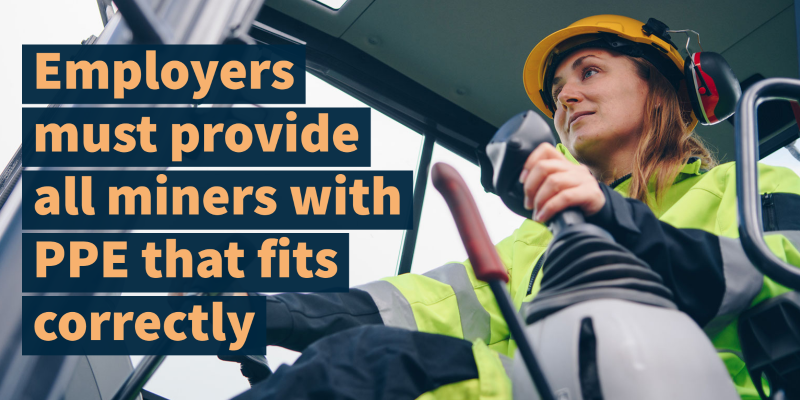
May 14-20 is National Women’s Health Week. The Mine Safety and Health Administration encourages women miners to check the condition and fit of their personal protective equipment. Eighteen miners have already been killed on the job this year. Making sure the personal protective equipment you wear at work is in the right condition is a critical step to protect your safety and health.
Mine operators should also take actions that provide women and men with appropriate personal protective equipment that meets regulatory requirements.
Women serve in many roles in the mining industry, from working in underground coal mines to driving powered haulage vehicles to processing materials in metal and non-metal mines. As of 2020, 14,000 mine workers in the United States were women, including work in underground coal mines. Mining environments can be hazardous, because a variety of machines, large trucks and tools are used to extract and transport materials.
To protect themselves from injuries, miners must wear job-specific personal protective equipment. Hard hats, reflective vests, ear protection and respirators are each designed to protect miners from specific hazards. But to work, the gear must fit.
While some equipment – like coveralls and hard hats – may fit similarly for women and men, other essential personal protective equipment – such as fall protection harnesses and respirators – require a different design to fit women.
When women wear personal protective equipment that does not fit, the risk of injuries and illnesses increases. For example, when a miner wears a respirator that does not fit, they may inhale a larger quantity of dust, or when their eye protection does not fit, their vision is restricted.
To check the condition of your PPE, follow OSHA's general guidelines:
- Look over your hard hat, suspension system and other accessories for holes, cracks, tears or other damage. Hard hats with cracking or a deformity should be replaced.
- Inspect your gloves to ensure that they are not torn, punctured or discolored. When you find a defect, replace the gloves.
- Inspect your eye protection lenses to make sure they do not have chips, cracks or scrapes that limit visibility. When you find a defect, replace your eye protection. Your eye protection should stay on your face and not slide or fall off.
All miners deserve to go home safe and healthy at the end of their shift. For more mine safety and health information and training materials, visit our website. To report an accident or anonymously report a hazardous condition, call 1-800-746-1553 or use MSHA’s online Hazardous Condition Complaint system.
Vicki Mullins is an accident investigator and program manager with the Mine Safety and Health Administration.

 U.S. Department of Labor Blog
U.S. Department of Labor Blog